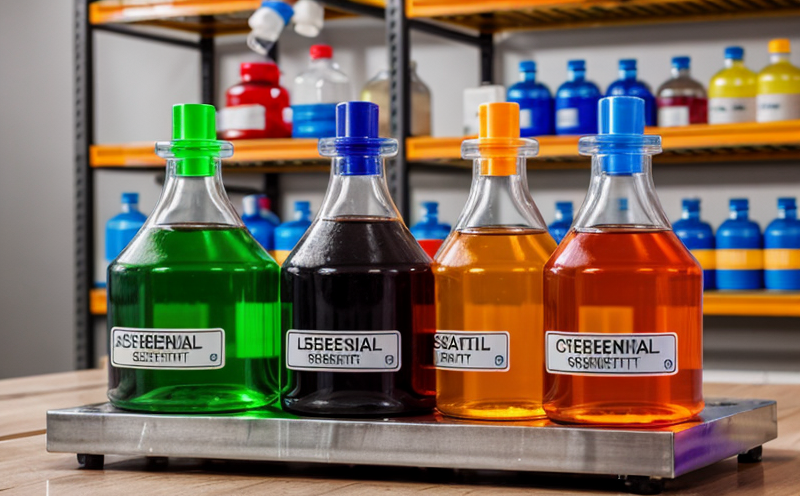Heavy Metal Content Testing in Consumer Products
In today’s competitive market, ensuring product safety and compliance with international regulations is paramount. Heavy metal content testing plays a critical role in safeguarding end-users against potential health risks associated with exposure to harmful substances.
Heavy metals such as lead (Pb), mercury (Hg), cadmium (Cd), and arsenic (As) are known for their toxicity even at low concentrations. Their presence in consumer products can lead to serious health issues including neurological damage, kidney disease, and cancer. This testing service is essential for manufacturers, quality managers, compliance officers, R&D engineers, and procurement teams who are responsible for ensuring the safety of their products.
The test involves several steps starting with careful sample preparation. The specimen must be representative of the product being tested to ensure accurate results. Once prepared, the samples undergo a series of analytical procedures such as atomic absorption spectroscopy (AAS), inductively coupled plasma optical emission spectrometry (ICPOES), and inductively coupled plasma mass spectrometry (ICP-MS). These methods allow for precise detection and quantification of heavy metal content.
The selection of appropriate standards is crucial. Compliance with international standards such as ISO 17025, ASTM E1686, EN 14362, and IEC 60312 ensures that the testing meets the highest quality requirements. These standards provide guidelines for sample preparation, analytical methods, and interpretation of results.
The acceptance criteria are stringent and vary depending on the product category. For instance, in children’s toys or jewelry, limits set by regulations like EU Directive 2011/65/EU (RoHS) are more rigorous to protect the most vulnerable populations. In contrast, electronic devices may follow standards such as UL 94V-0 and IPC-A-837D for flammability and electrical performance.
Understanding these nuances helps in tailoring the testing approach to meet specific compliance requirements. For example, if a company is developing a new line of children’s apparel, they would need to ensure that all components, including fabric dyes, buttons, and zippers, comply with the strictest limits set by regulatory bodies.
The importance of accurate and reliable testing cannot be overstated. False negatives or positives can lead to costly recalls and damage to brand reputation. Therefore, it is essential for laboratories to employ experienced professionals who are well-versed in both analytical techniques and regulatory requirements.
Why Choose This Test
Heavy metal content testing offers numerous benefits that make it indispensable for businesses operating in the consumer products sector. Firstly, it helps manufacturers stay compliant with international regulations such as REACH, RoHS, and TBT (Technical Barriers to Trade Agreement). Compliance is not just a legal requirement but also enhances brand reputation and customer trust.
Secondly, by identifying heavy metals early in the development process, companies can make necessary adjustments before mass production begins. This proactive approach saves time and money that would otherwise be spent on correcting issues post-launch.
Thirdly, testing ensures product safety for end-users. Knowing the exact levels of harmful substances present allows manufacturers to take corrective actions if needed, thereby protecting consumers from potential health risks.
Furthermore, this service provides valuable insights into supply chain management. By ensuring that all suppliers meet the same stringent standards, companies can maintain high-quality product lines consistently across different regions.
Customer Impact and Satisfaction
The impact of heavy metal content testing extends beyond regulatory compliance; it significantly improves customer satisfaction by delivering safer products. Consumers today are increasingly aware of the risks associated with certain materials used in manufacturing processes.
A study conducted by Nielsen found that 73% of global respondents said they would stop buying a product if they knew it contained harmful chemicals. By conducting thorough testing, manufacturers can reassure their customers about the quality and safety of their products, fostering long-term loyalty and trust.
In addition to enhancing customer relationships, this service also supports broader sustainability goals. Reducing the use of hazardous substances not only benefits human health but also contributes positively to environmental conservation efforts by minimizing pollution during manufacturing and disposal stages.
International Acceptance and Recognition
The global nature of consumer product trade means that acceptance and recognition of testing results are vital. Laboratories accredited according to ISO/IEC 17025 standards enjoy widespread trust among both domestic and international markets.
Regulatory bodies such as the European Chemicals Agency (ECHA), United States Environmental Protection Agency (US EPA), and Chinese National Standards Committee have adopted these standards for their assessments. This accreditation ensures that test results are credible, repeatable, and accepted worldwide.
The harmonization of testing protocols across countries facilitates smoother trade flows, reduces barriers to entry into new markets, and promotes fair competition within the global marketplace.





